Table of Contents
The umbrella term “pepper” covers cultivars of the genus Capsicum, belonging to the same nightshade family of eggplants, potatoes, and tomatoes. Depending on the variety, peppers provide different degrees of spiciness.
Some peppers are tolerable — while others are torment to consume. Learning about peppers can “burn you out” due to the countless varieties and their complexities.
Don’t sweat it! We’ve listed all the must-have pepper varieties in this extensive guide to growing your own peppers at home.
Common Pepper Types
From India’s curries and Mexico’s salsas and tacos to Thailand’s soups and stews, peppers play a vital role in most cuisines of the world. They are cultivated mainly for their intense heat and unique pungency that is measurable through the Scoville heat unit scale (SHU).
Chili peppers — also referred to as chile — can be dried, pickled, or roasted. These culinary techniques can be applied to different types of peppers as well, such as Bell, Jalapeño, and Poblano peppers. In case that your garden overproduces, canning peppers will help them last for future use.
Peppers can be classified by heirloom and hybrid varieties.
Heirloom and Hybrid Peppers
Heirloom plant varieties are essentially free from cross-breeding for at least 40 to 50 years. Historically, heirloom peppers are passed down from generation to generation. This seed-saving practice is common in many social units — ethnic, familial, or religious — of certain geographic areas. Heirloom varieties are typically true to seed, so expect the same traits as the parent plant.
However, accidental outcrossing between open pollinated pepper varieties is possible. To prevent this, separate your plants with a net or mesh. Keep in mind: Heirloom varieties may not be suitable for mass distribution and production due to their susceptibility toward disease and pests.
Common plant diseases like bacterial leaf spot, damping off disease, mosaic virus, and Verticillium wilt can impede proper growth of your pepper plants. Additionally, aphids, flea beetles, pepper weevils, spider mites, and thrips can destroy your peppers during harvest season.
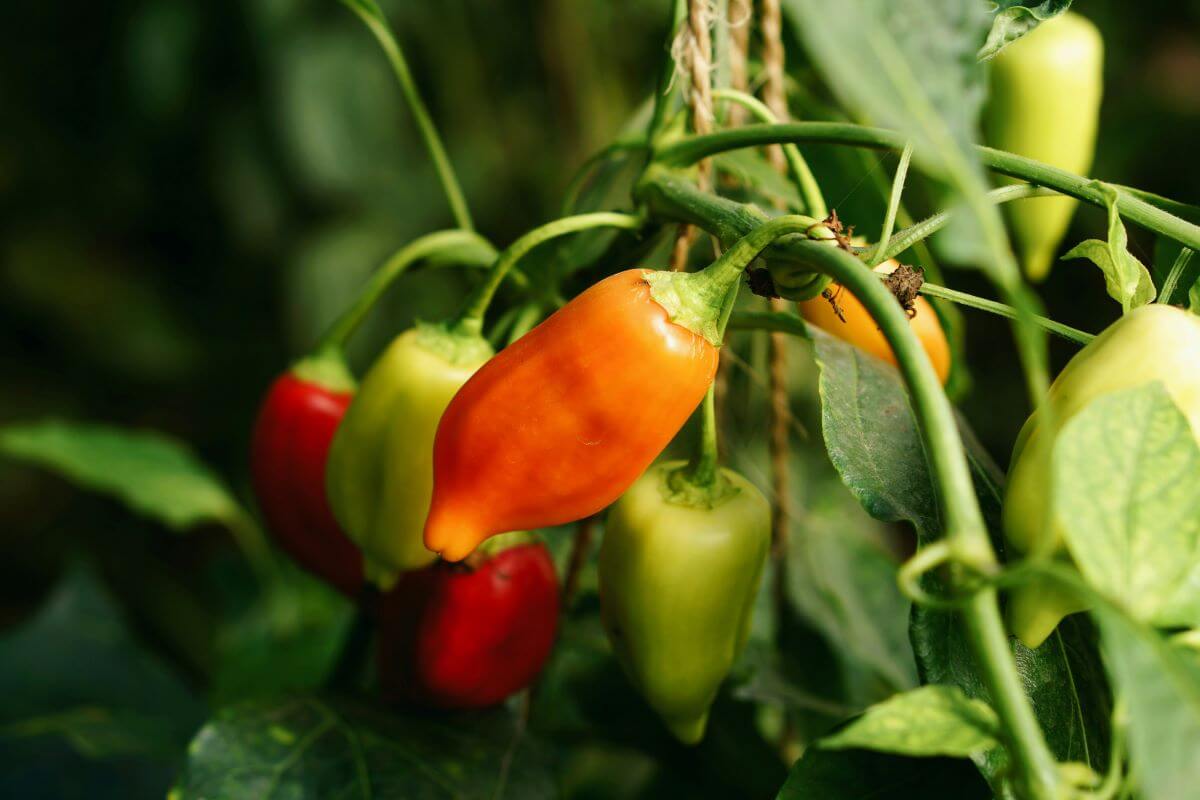
As an alternative, you may want to explore hybrid pepper varieties.
Through intentional and manual crossbreeding, hybrid varieties are created. Qualities from two different pepper varieties of the same cultivar can further enhance the resulting hybrid, especially on its growth, resistance, and yield. In some cases, specific traits on texture and flavor can be improved. Due to these innovations, hybrid varieties are more preferred for large-scale farming and transportation.
No permanent seed line is created in most hybrids. To produce additional seeds, the same parent varieties should be crossbred again.
Other Popular Pepper Groupings
In supermarket aisles, peppers are usually grouped according to their colors and cultivars. Find out more about their characteristics and other popular varieties below.
Types of Pepper Colors
Peppers have changing colors as they mature. From dark green, purple, or red to a lighter color like yellow, get to know different pepper varieties according to their colors after maturity.
Types of Pepper Flavors
There are two major flavor profiles in peppers. Hot varieties tend to have heat even in their unripe state. On the other hand, pepper varieties at zero SHU are considered sweet.
| Pepper Flavors | Common Examples (Where to Buy) |
|---|---|
| Spicy Peppers | Anaheim Chili (Eden Brothers, True Leaf Market) Cambuchi (True Leaf Market) Cayenne Golden (True Leaf Market) Garden Salsa Hybrid (True Leaf Market) Jalapeño Early (Eden Brothers, Territorial Seed Company, True Leaf Market) Poblano (Eden Brothers, Territorial Seed Company) |
| Sweet Peppers | Chocolate Beauty (Eden Brothers, True Leaf Market) Diamond (True Leaf Market) Golden Star (Territorial Seed Company) Sunbright (True Leaf Market) Sweet Pickle (True Leaf Market) Tender Bell F1 Hybrid (True Leaf Market) |
Types of Pepper Heat Categories
As mentioned above, the heat of a pepper variety is measurable through the Scoville heat scale, which was invented by the American pharmacist Wilbur Scoville. A Scoville rating relies on the number of capsaicinoids in the pepper to quantify its pungency.
| Pepper Heat Categories | Common Examples (Where to Buy) |
|---|---|
| Sweet Peppers (Below 1,000 SHU) | Cheese Red (True Leaf Market) Chianti (True Leaf Market) Habanada (Territorial Seed Company) Pepperoncini Italian (Eden Brothers, Territorial Seed Company, True Leaf Market) Pimento (Eden Brothers) Shishito (True Leaf Market) |
| Mild Peppers (1,000 to 2,500 SHU) | Bastan (Territorial Seed Company) Jalapeño Tam (Eden Brothers, True Leaf Market) Mexibell F1 (True Leaf Market) Poblano (Eden Brothers, Territorial Seed Company) Trident (Territorial Seed Company) |
| Medium-Heat Peppers (2,500 to 30,000 SHU) | Black Hungarian (Rare Seeds) Fresno Chili (Eden Brothers, True Leaf Market) Jalapeño Brown (Rare Seeds) Jalapeño Early (Eden Brothers, Territorial Seed Company, True Leaf Market) Large Red Cherry Hot (True Leaf Market) Serrano Tampiqueño (Eden Brothers, True Leaf Market, Rare Seeds) |
| Hot Peppers (30,000 to 100,000 SHU) | Cayenne Espana F1 (True Leaf Market) Cayenne Golden (True Leaf Market) Cayenne Purple (Eden Brothers, True Leaf Market) Cayenne Long Red Thin (Eden Brothers, True Leaf Market) Super Chili (True Leaf Market) Thai Scorpion F1 (True Leaf Market) |
| Extra-Hot Peppers (100,000 to 500,000 SHU) | Aji Chombo (Rare Seeds) Habanero White (True Leaf Market) Habanero Caribbean Red (Eden Brothers, True Leaf Market) Habanero Orange (Eden Brothers, Territorial Seed Company, True Leaf Market) Orange F1 (True Leaf Market) Orange Scotch Bonnet (True Leaf Market) |
| Extremely Hot Peppers (500,000 SHU and beyond) | Apocalypse Scorpion (Rare Seeds) Bhut Jolokia or Ghost (Eden Brothers, Territorial Seed Company, True Leaf Market, Rare Seeds) Carolina Reaper (Rare Seeds) Chocolate Trinidad Scorpion (Rare Seeds) Jay’s Peach Bhut Jolokia (Rare Seeds) Wicked Ghost F1 (True Leaf Market) |
Types of Pepper Shapes
Peppers are not exclusively conical in shape. Some varieties come in weird forms. Large peppers are a popular choice for stuffing. Smaller green peppers with thin skin are well-loved in salads.
| Pepper Shapes | Common Examples (Where to Buy) |
|---|---|
| Bell-Shaped Peppers | Chinese Giant (True Leaf Market) Gourmet (Territorial Seed Company) Purple Star (Territorial Seed Company) Sprinter (Territorial Seed Company) White Cloud (True Leaf Market) Yolo Wonder (Eden Brothers, True Leaf Market) |
| Finger-Shaped Peppers | Birdseye Chili (True Leaf Market) Buda Hot Wax (Territorial Seed Company) Gochu Vita Green (True Leaf Market) Prik Mun (True Leaf Market) Serrano (Eden Brothers) Sweet Banana (Eden Brothers) |
| Irregularly Shaped Peppers | Habanero Sweet Red (True Leaf Market) Jamaica Hot Red (Eden Brothers) Mushroom Red (Territorial Seed Company, True Leaf Market) Primero Red (Territorial Seed Company) Wicked Ghost F1 (True Leaf Market) |
Types of Pepper Textures
Knowing the textures of peppers will help you choose the right variety for your culinary needs.
| Pepper Textures | Common Examples (Where to Buy) |
|---|---|
| Crisp Peppers | Big Red Bell (Eden Brothers, True Leaf Market) Chili Pie F1 (Eden Brothers) Chocolate Beauty (Eden Brothers, True Leaf Market) Golden Star (Territorial Seed Company) Padron (Eden Brothers, Territorial Seed Company, True Leaf Market) Purple Star (Territorial Seed Company) |
| Juicy Peppers | Buffy (Territorial Seed Company) Cozumel (Territorial Seed Company) Golden Treasure F1 (True Leaf Market) Marconi Red (Eden Brothers, True Leaf Market) Miniature Chocolate Bell (Territorial Seed Company, True Leaf Market) Pimento (Eden Brothers) |
Types of Geographic Origins
Peppers are believed to have originated in central Latin America. Through time, this plant has dispersed to other territories, playing a significant role in many cuisines.
| Geographic Origins | Common Examples (Where to Buy) |
|---|---|
| European and Mediterranean Peppers | Golden Marconi (Eden Brothers, True Leaf Market) Marconi Red (Eden Brothers, True Leaf Market) Oranos (Territorial Seed Company) Padron (Eden Brothers, Territorial Seed Company, True Leaf Market) Pepperoncini Italian (Eden Brothers, Territorial Seed Company, True Leaf Market) Poblano (Eden Brothers, Territorial Seed Company) |
| Central, North, and South American Peppers | Aji Rico (Territorial Seed Company) Bridge to Paris (Territorial Seed Company) Cozumel (Territorial Seed Company) Felicity (Territorial Seed Company) Habanada (Territorial Seed Company) Sprinter (Territorial Seed Company) |
| Asian Peppers | Bhut Jolokia or Ghost (Eden Brothers, Territorial Seed Company, True Leaf Market, Rare Seeds) Fushimi (True Leaf Market) Manganji (True Leaf Market, Rare Seeds) Takanotsume (True Leaf Market) Thai Super Chili F1 (Eden Brothers, True Leaf Market) Yatsufusa (True Leaf Market) |
Types of Culinary Uses
Peppers are versatile ingredients.
Types of Disease Resistance
Some pepper varieties are more prone to disease than others.
| Disease Resistance | Common Examples (Where to Buy) |
|---|---|
| Disease Resistant Peppers | Double Up (Territorial Seed Company) Dragonfly (Territorial Seed Company) La Bomba II (Territorial Seed Company) Jalapeño Tam (Eden Brothers, True Leaf Market) Milena (Territorial Seed Company) Sprinter (Territorial Seed Company) |
| Susceptible Peppers | Big Jim (True Leaf Market) Cascabella (True Leaf Market) NuMex Twilight (True Leaf Market) |
Types of Preferred Growing Conditions
Different types of peppers have varying gardening needs to fully thrive.
| Preferred Growing Conditions | Common Examples (Where to Buy) |
|---|---|
| Container Peppers | Canary Bell (True Leaf Market) Capitan F1 (Eden Brothers) Fresh Bites Orange (Territorial Seed Company) Large Red Cherry Hot (True Leaf Market) Pot-A-Peño (Territorial Seed Company) Sweet Cubanelle (True Leaf Market) |
| Field Peppers | Brocanto (Territorial Seed Company) Beauty Cucumber Hybrid (True Leaf Market) Gochu Vita Green (True Leaf Market) Gochujang King Hybrid (True Leaf Market) Oranos (Territorial Seed Company) Yeori Gochu (True Leaf Market) |
| Greenhouse Peppers | Bastan (Territorial Seed Company) Brocanto (Territorial Seed Company) Milena (Territorial Seed Company) Sprinter (Territorial Seed Company) Tender Bell F1 Hybrid (True Leaf Market) Valahia F1 (Eden Brothers) |
Popular Varieties of C. annuum
With over 200 common names, the C. annuum is the primary species in the Capsicum genus. Varieties from this group have been used for their culinary importance and health benefits. Fruits from this species can create the component capsaicin, which remains intact after fruit maturity.
Bell Peppers
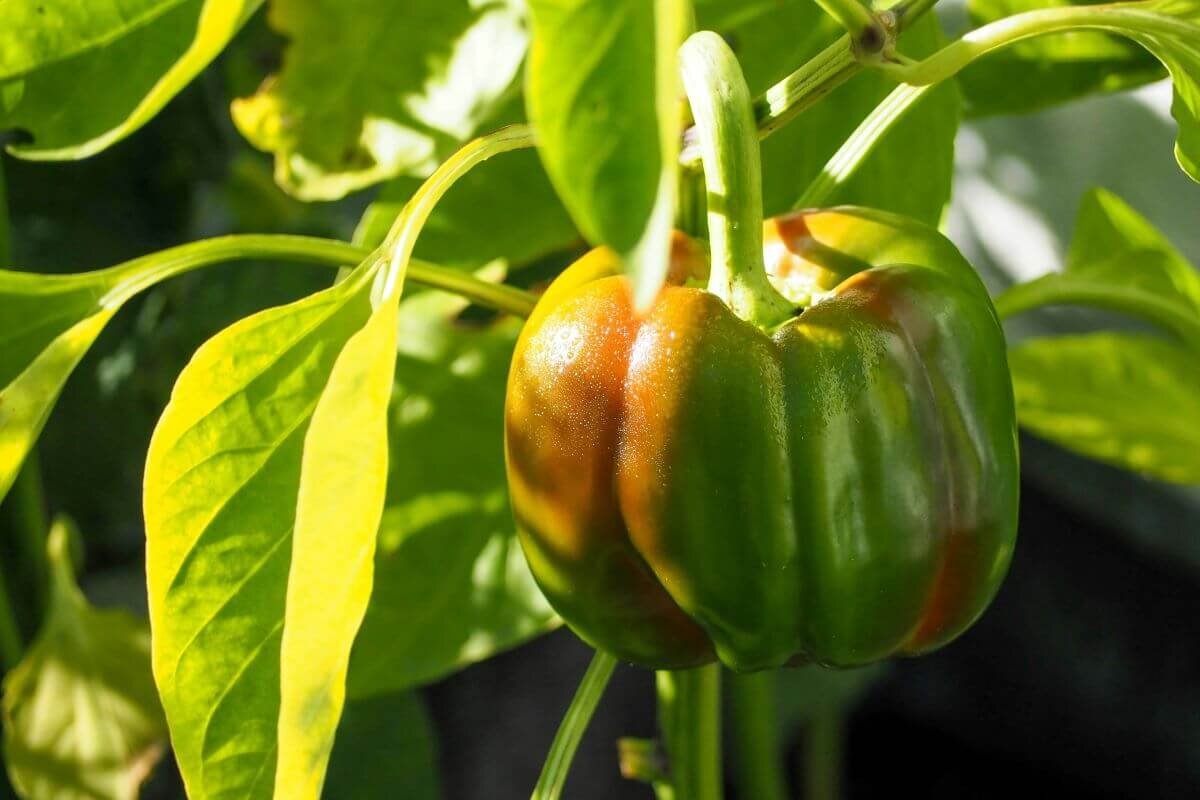
Colorful peppers with a mild to no spice flavor, Bell peppers come in a rainbow of colors — chocolate, green, orange, purple, yellow, and white. Some varieties with thicker skin can be stuffed with dairy and meat. You can also find them as toppings in salads or pizzas, lending a sweet taste.
| Variety | Description | Flavor Profile | Days to Maturity | Where to Buy |
|---|---|---|---|---|
| Golden California Wonder | Sweet and subtle, Golden California Wonder can grow thick, four-lobed fruits. Lighten up your homemade pizza by topping it with fresh golden slices of this variety. | Sweet | 75 to 80 days | Eden Brothers, True Leaf Market |
| Lilac Bell | This variety yields beautiful lavender-colored Bell peppers that eventually matures to red. Its blocky, bell shape makes it an excellent slicing pepper. | Sweet | 70 to 75 days | True Leaf Market |
| Mini Bell Yellow | Enjoy easy-to-eat Bell peppers from this variety. The three-lobed produce is excellent for fresh consumption. When incorporated in salads, the bright yellow hue of Mini Bell complements well with your bed of greens. | Sweet | 55 to 60 days | Territorial Seed Company, True Leaf Market |
| Miniature Chocolate Bell | Originating from Ohio, the Miniature Chocolate Bell variety yields small peppers of at least 2 inches long. The color begins with a green and slowly deepens to dark red-brown. | Sweet | 55 to 75 days | Territorial Seed Company, True Leaf Market |
| Purple Beauty | Starting as green, the Purple Beauty variety matures into purple, indicating they’re ready for harvest. However, you can leave it longer on the plant and witness its color change to red. | Sweet | 75 to 80 days | Eden Brothers, True Leaf Market, Rare Seeds |
| White Cloud | Watch this variety produce pale Bell peppers that mature to orange and red. | Sweet | 70 to 75 days | True Leaf Market |
Cayenne Peppers
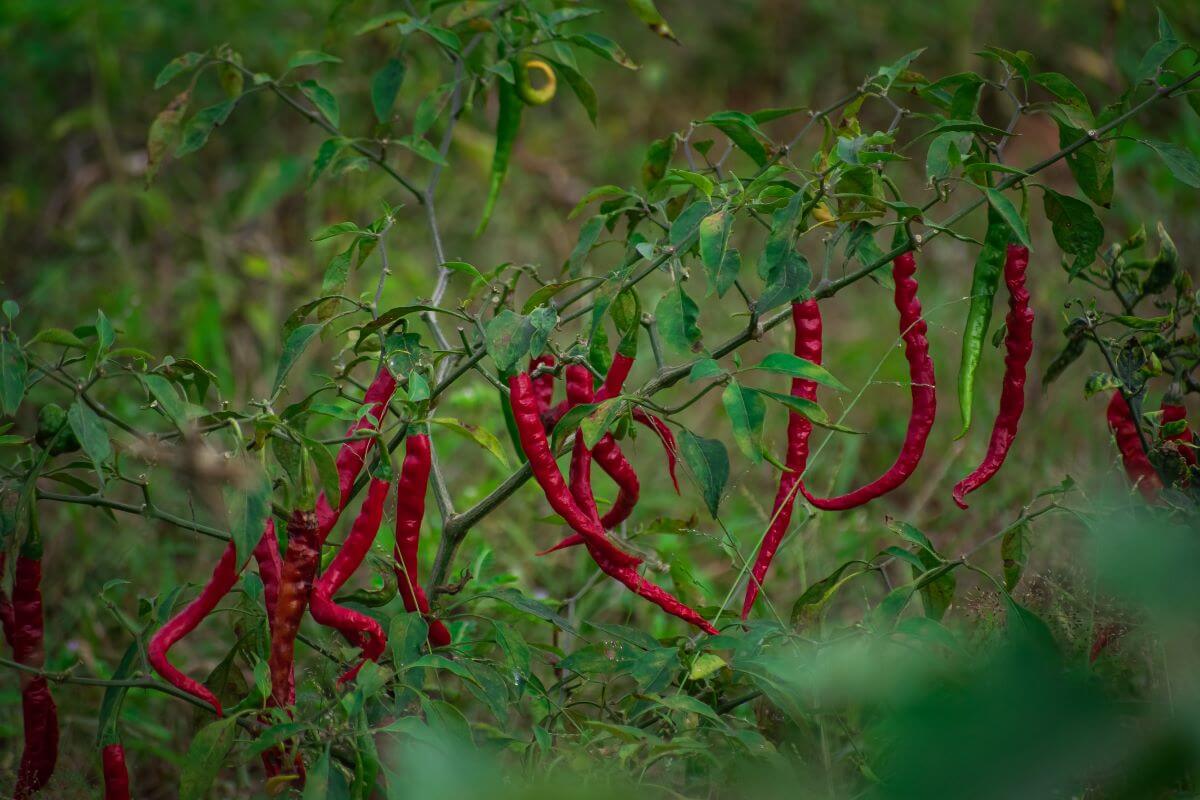
Cayenne peppers are traditionally dried and ground to powder. Fruits tend to be thin and long with a curving tip and red, waxy skin.
| Variety | Description | Flavor Profile | Days to Maturity | Where to Buy |
|---|---|---|---|---|
| Cayenne Espana F1 | Excellent for cooking applications, Cayenne Espana is a hybrid variety with an upright plant structure, two feet high at most. | Hot | 65 to 70 days | True Leaf Market |
| Cayenne Golden | Cayenne Golden falls under the bracket of 30,000 to 50,000 in the SHU scale. Fruits can grow 4 to 6 inches in length. | Hot | 85 to 95 days | True Leaf Market |
| Cayenne Long Red Thin | This classic red cayenne can grow anywhere between 5 to 6 inches long. Pungent and spicy, Cayenne Long Red Thin can be processed as flakes or powder due to their durable texture. | Hot | 75 to 90 days | Eden Brothers, True Leaf Market |
| Cayenne Purple | What separates this variety from others is its purple skin. Additionally, Cayenne Purple has a hint of sweetness that not all cayenne varieties have. | Hot | 75 to 85 days | Eden Brothers, True Leaf Market |
| Cowhorn Hot | Spicy lovers will love Cowhorn Hot and its crisp texture. Boasting the classic bright red color in cayenne, Cowhorn Hot can be put in salsas and sauces, or processed into flakes. | Hot | 90 to 95 days | True Leaf Market |
| Hot Portugal | An heirloom variety, Hot Portugal yields a staggering 6 to 7 inches long scarlet fruits. | Hot | 60 to 65 days | True Leaf Market |
Jalapeño Peppers
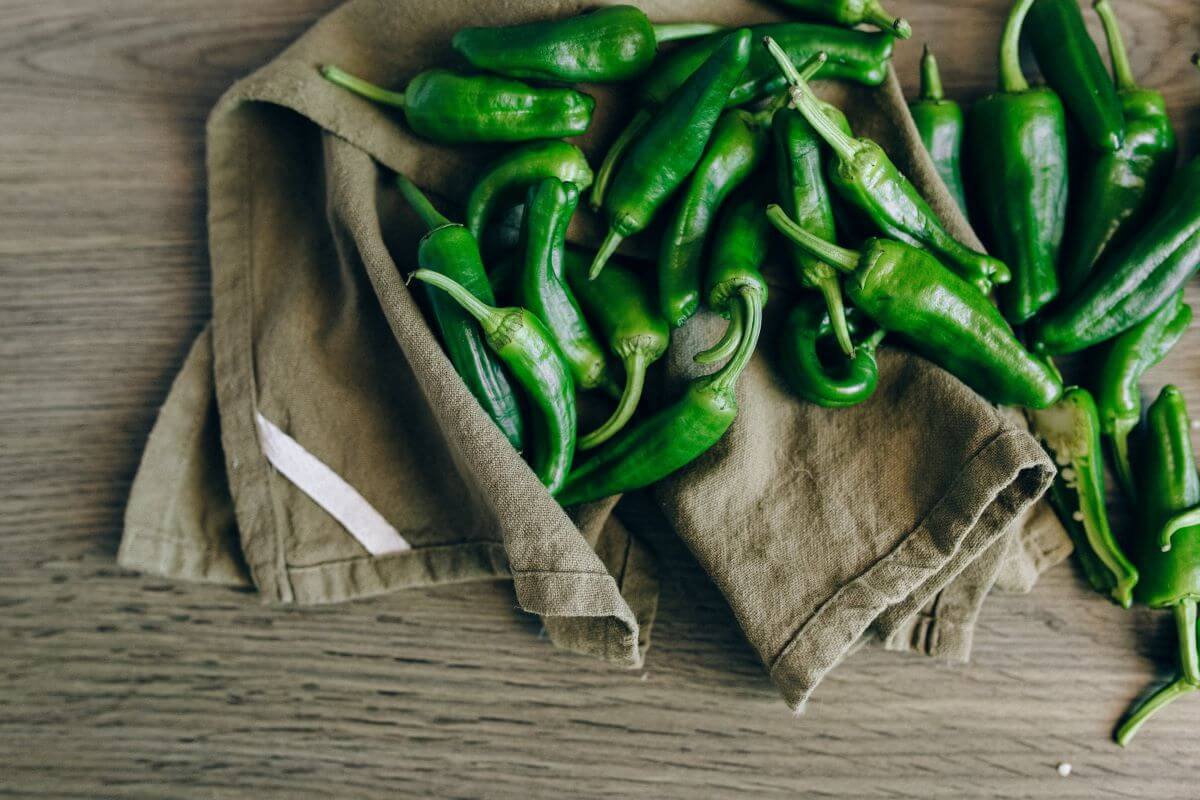
Usually served as a side or topping, Jalapeño is a pod-type pepper with higher pungency than Bell peppers. Cultivars are popular ingredients in Mexican dishes. They are used as topping in nachos and served as appetizers with stuffing.
| Variety | Description | Flavor Profile | Days to Maturity | Where to Buy |
|---|---|---|---|---|
| Jalapeño | Well-loved in the kitchen due to its versatile uses, the classic Jalapeño can reach to 3 inches in length at most. Expect heat between 2,000 to 8,000 SHU. | Hot | 70 to 75 days | True Leaf Market |
| Jalapeño Early | Scoring around 2,000 to 8,000 in the Scoville scale, Jalapeño Early grows at least 3-inch long peppers on a compact plant. If you have limited garden space, this variety is a good choice. | Hot | 65 to 70 days | Eden Brothers, Territorial Seed Company, True Leaf Market |
| Jalapeño Purple | This variety’s purple flowers are eye-catching ornamentals in gardens. With a mild heat, Jalapeño Purple has 2,500 to 8,000 SHU. | Hot | 85 to 90 days | Eden Brothers, Territorial Seed Company |
| Jalapeño Tam | Enjoy the crisp, vegetal flavor of peppers without the torturous heat in Jalapeño Tam. This variety has 1,000 to 1,500 SHU. | Hot | 65 to 80 days | Eden Brothers, True Leaf Market |
| Pot-A-Peño | This F1 variety is an All-America Selection winner. It can be planted in containers or hanging baskets due to its small, compact size. This variety is earlier to mature than other Jalapeño varieties. | Hot | 65 to 70 days | Territorial Seed Company |
| La Bomba II | La Bomba II is resistant to bacterial leaf spot and tobacco mosaic virus. | Hot | 56 to 60 days | Territorial Seed Company |
Chili Peppers
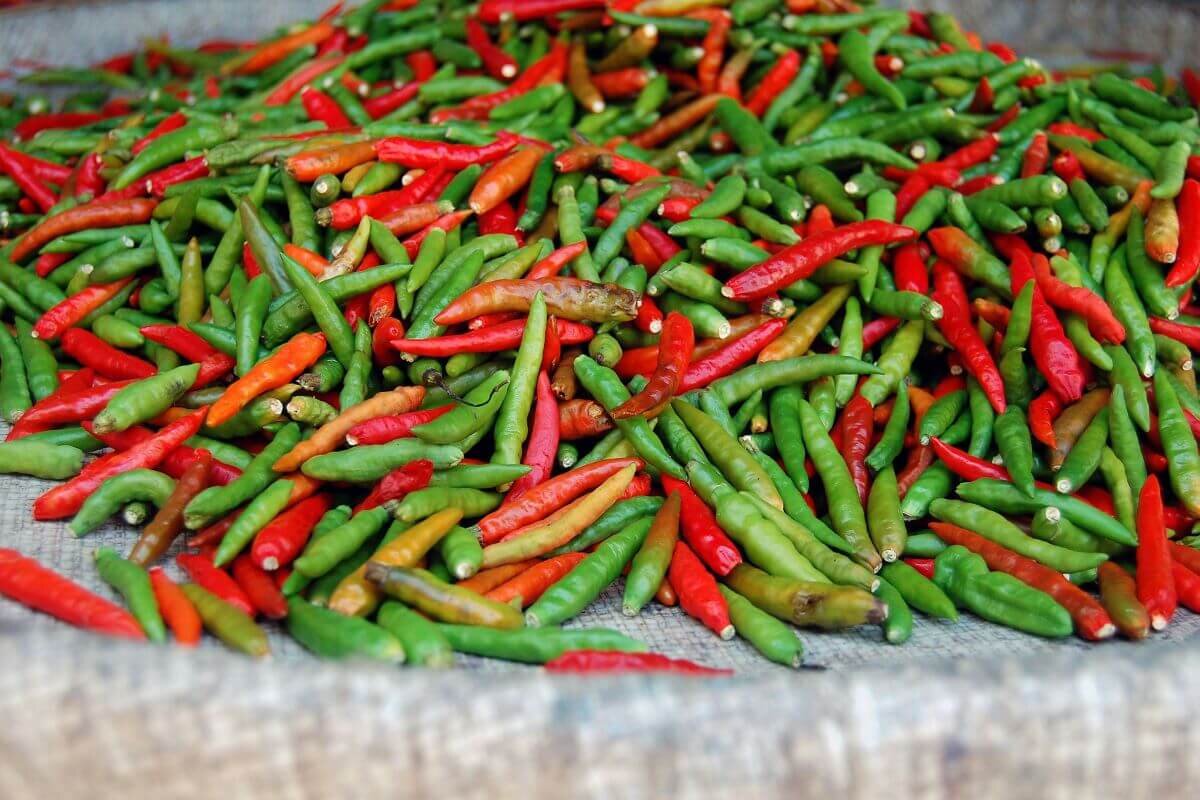
From a tolerable heat to a numbing warmth, chili pepper varieties are commonly processed to produce kitchen spices like chili powder and paprika.
| Variety | Description | Flavor Profile | Days to Maturity | Where to Buy |
|---|---|---|---|---|
| Anaheim Chili | Thick-skinned and meaty, Anaheim peppers grow 6 to 8 inches long and retain their shape after roasting or stuffing. | Hot | 80 to 85 days | Eden Brothers, True Leaf Market |
| Birdseye Chili | Common in African, Asian, and Spanish cuisines, Birdseye Chili fruits start as green and mature to red. You can preserve your Birdseye Chili harvest by drying and pulverizing them into powder. | Hot | 120 to 140 days | True Leaf Market |
| Fresno Chili | Fresno Chili grows upward-facing plants with pointed fruits quite similar to Jalapeños. This type of chili pepper has a Scoville score of 5,000 to 10,000 SHU. | Hot | 75 to 80 days | Eden Brothers, True Leaf Market |
| Small Red Chili | This variety produces inch-long peppers suitable for countless recipes. | Hot | 85 to 90 days | True Leaf Market |
| Super Chili | In 1988, Super Chili was awarded by the All-America Selections organization due to its tight and upright plant growth. This variety can be grown for culinary and ornamental purposes. | Hot | 75 to 80 days | True Leaf Market |
| Thai Super Chili F1 | Landing between 75,000 to 100,00 SHU, Thai Super Chili F1 is a container pepper variety with high yielding capacity. The peppers are often applied in most Asian recipes. | Hot | 60 to 90 days | Eden Brothers |
Popular Varieties of C. chinense
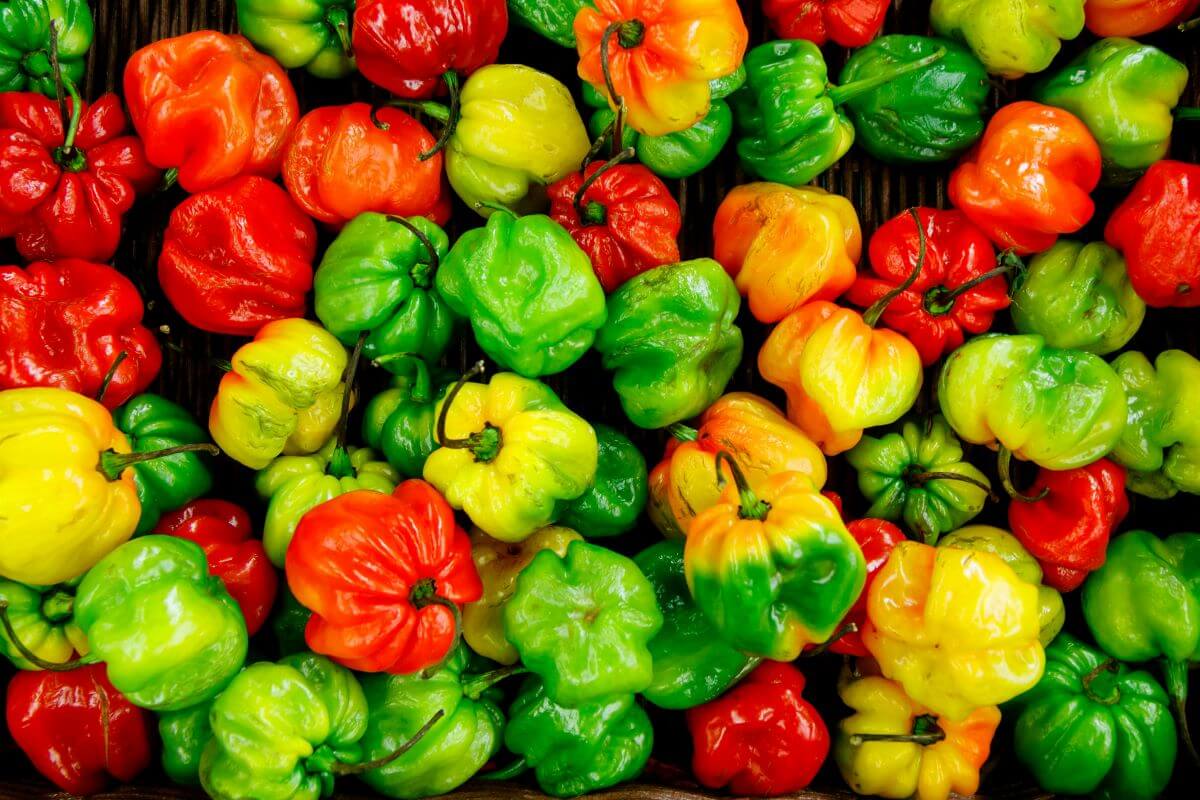
Under this cultivated variety are chili peppers originating from the Americas. These are Habanero-type peppers, which includes many of the spiciest peppers.
| Variety | Description | Flavor Profile | Days to Maturity | Where to Buy |
|---|---|---|---|---|
| Habanada | Also known as Sweet Habanero, Habanada generates bright orange fruits bursting with sweet flavor. This variety is excellent for container planting. | Sweet | 70 to 75 days | Territorial Seed Company |
| Habanero Caribbean Red | This variety has a distinct smoky taste melded with the classic Habanero heat. | Hot | 110 to 115 days | Eden Brothers, True Leaf Market |
| Habanero Orange | Perfect for fresh salsas, the Habanero Orange variety has SHU of 100,000 to 300,000, so consume at your own risk! | Hot | 90 to 100 days | Eden Brothers, Territorial Seed Company, True Leaf Market |
| Habanero Sweet Red | Habanero Sweet Red produces bite-sized peppers with a fruity flavor. The fruits have lower heat levels than typical Habanero varieties. | Sweet | 80 to 85 days | True Leaf Market |
| Habanero White | Native to South America, this variety is known for its pale-white peppers with at least 300,000 to 500,000 SHU. | Hot | 90 to 100 days | True Leaf Market |
| Primero Red | Primero Red has intermediate resistance to tomato spotted wilt virus. It has milder spice than other Habanero varieties. | Hot | 80 to 85 days | Territorial Seed Company |
Other Varieties of Pepper
Less common varieties of peppers you might find in the grocery store or farmers market include the following.
Popular Varieties of C. baccatum
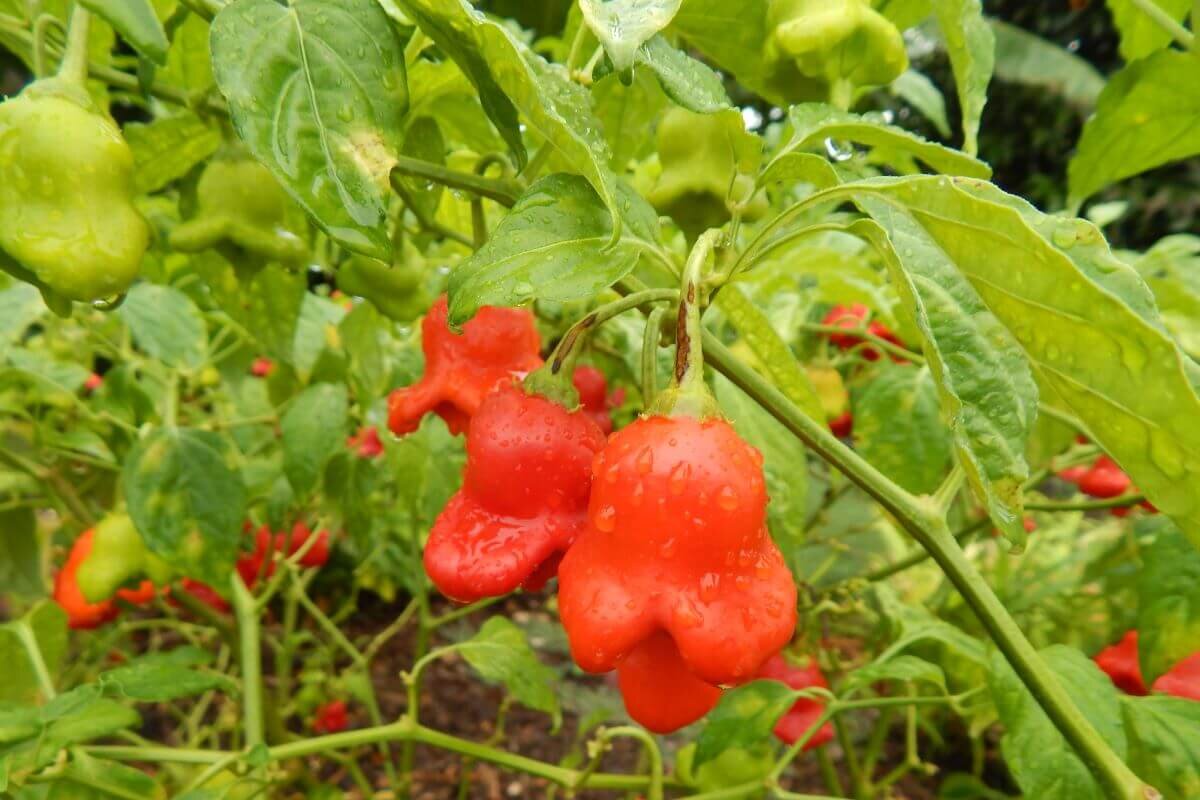
Varieties from these species tend to have South American origins. They are linked with Bolivian, Colombian, Ecuadorian, and Peruvian cuisines. Peppers of the C. baccatum species tend to have a gold- or green-colored corolla in white flowers that mature into pod-type fruits hanging from the plant.
| Variety | Description | Flavor Profile | Days to Maturity | Where to Buy |
|---|---|---|---|---|
| Aji Rico | Due to its early-maturing ability and vigorous yield, Aji Rico received the All-America Selections award in 2017. | Hot | 61 to 65 days | Territorial Seed Company |
| Cambuchi | This hot pepper variety is crisp as apples with sweetness suitable for fresh salads, salsas, and sauces. | Sweet | 80 to 90 days | True Leaf Market |
Popular Varieties of C. frutescens
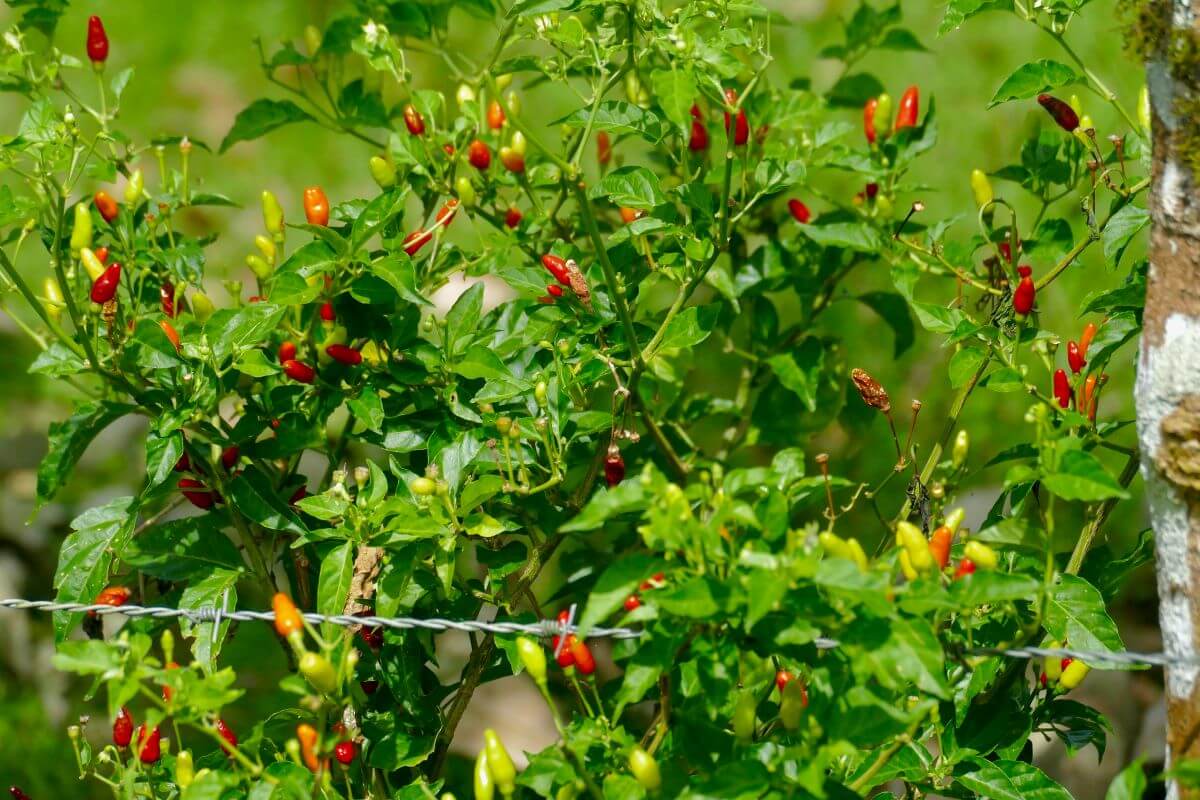
Varieties of C. frutescens are genetically similar to C. chinense varieties. Tabasco pepper and other varieties native to South Asian countries like India are part of this species.
| Variety | Description | Flavor Profile | Days to Maturity | Where to Buy |
|---|---|---|---|---|
| Tabasco | Falling anywhere between 30,000 to 50,000 units in the Scoville scale, Tabasco variety is native to Central America, but known globally as the main ingredient for Tabasco hot sauce. | Hot | 75 to 90 days | True Leaf Market, Rare Seeds |
| Bhut Jolokia or Ghost | Technically, a cross between C. frutescens and C. chinense, the Bhut Jolokia is one of the hottest peppers out there. It is at least 1,000,000 units in the Scoville scale. Other names for this variety include Ghost Chili and Naga Jolokia. | Hot | 100 to 160 days | Eden Brothers, Territorial Seed Company, True Leaf Market, Rare Seeds |
FAQ About Types of Peppers
Which is the hottest pepper variety?
According to the Guinness World Records, Pepper X is now the hottest pepper among other varieties. Its heat measures 2,693,000 in the Scoville scale. It was developed by Ed Currie of the Puckerbutt Pepper Company and first introduced to the public on an episode of Hot Ones. The world’s hottest pepper before Pepper X — Carolina Reaper — was bred by the same company.
Which pepper type is excellent for pickling?
Thick-skinned and waxy peppers are excellent options to pickle. Consider Black Hungarian, Hungarian Yellow Wax Hot, Red Cherry Sweet, and Sweet Cubanelle.



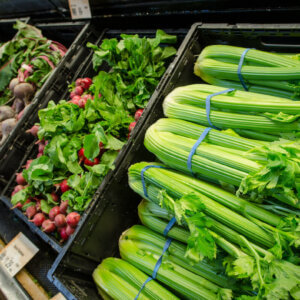





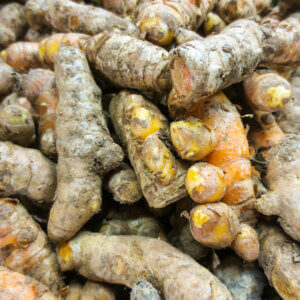


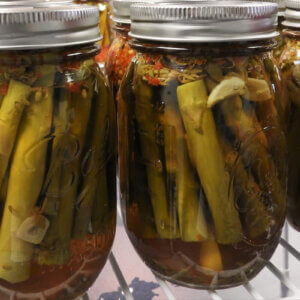
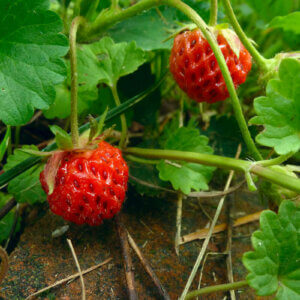

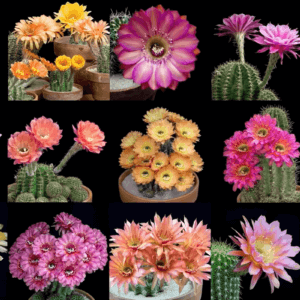

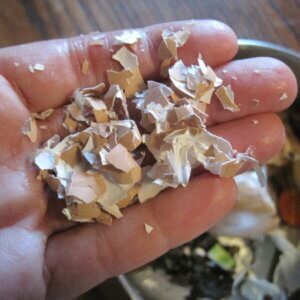


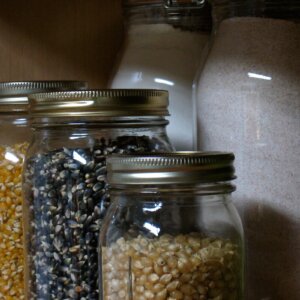
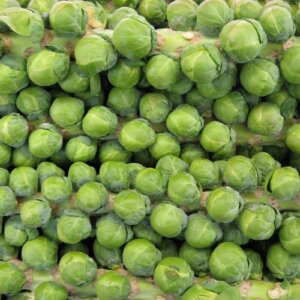


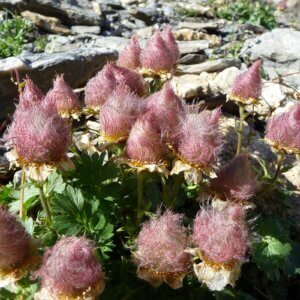




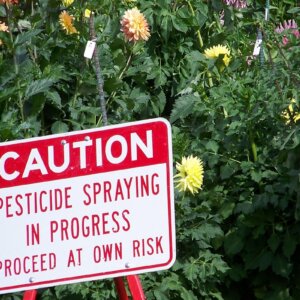












Leave a Reply